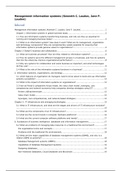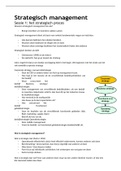Samenvatting
Samenvatting boek Management Information Systems
- Vak
- BIV-BIS (BIVBIS)
- Instelling
- Nyenrode Business Universiteit (Nyenrode)
Samenvatting van het boek "Management Information Systems" voor het vak van BIV-BIS inclusief plaatjes. Dit bevat alle relevante hoofdstukken voor het tentamen zoals aangegeven in het OWP. DIt zijn de hoofdstukken: H1, H2, H3, H5, H6, H8, H9, H12, H13 en H14.
[Meer zien]






